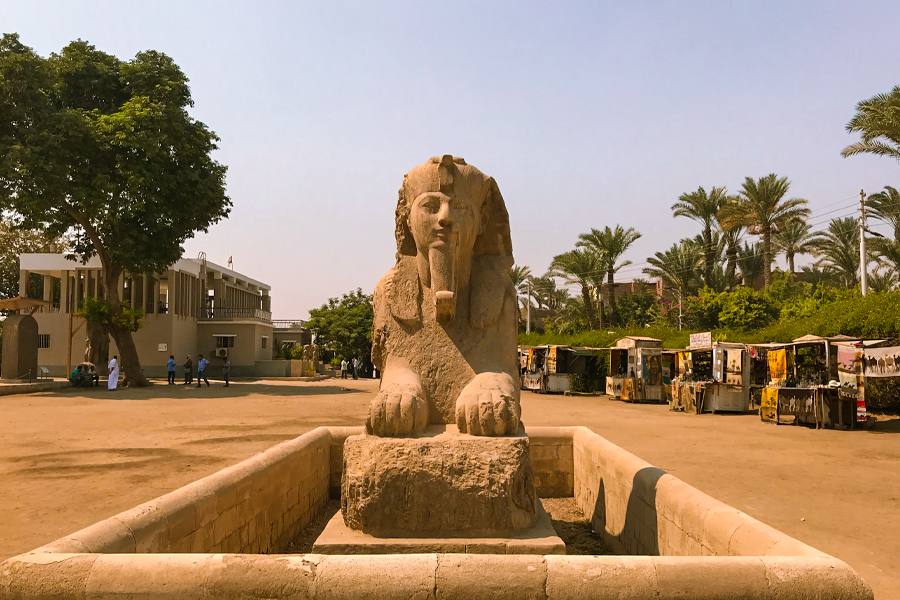The ancient Egypt city of Memphis
Memphis was the first capital of ancient Egypt when it was first set up. The city would be built in the area called Mit-Rahina, which is south of Cairo in modern-day Egypt. This is where the city would be built. Where are some of the most famous artifacts from Ancient Memphis still kept?
History of Memphis:
King Menes built Memphis and started the 1st Dynasty of Egypt around 3100 B.C. The city was chosen to be the first capital of Egypt, and it stayed in use for almost a thousand years. For 3000 years, the city was the center of worship for Ptah, the Egyptian god of creation, and a central economic hub. The city’s ruins are west of Saqqara, on the other side of the Nile, between Upper and Lower Egypt.
About Memphis:
Today, the Saqqara complex is about 2 kilometers east of the village of Mit-Rahina, where the Memphis archaeological region is located. The current entrance to the ruins is on the south side of the Temple of Ptah’s enclosure. The massive brick wall surrounding the area also disappeared along with the big temple. Still, it’s worth your time to check out what’s left of these old buildings. When you walk into the garden, you’ll see sculptures from all over Memphis that are now on display at an outdoor museum.
Near the edge of the garden, you can find a huge statue of Ramses II. It used to belong to King Senushtra I of a neighbouring country, but Ramses II wrote his name on it and took it for himself. On your way to the colossus of Ramses II, you will pass a limestone sphinx whose face reminds you of the first 18th dynasty pharaohs. This statue has no name, but it may have belonged to Queen Hatshepsut when she was in charge.
Important features
The English archaeologist Petrie found the Sphinx statue again in 1912. It is the most significant piece of ancient Egyptian art ever discovered, sheathing about 80 tonnes. As ruins, you can also see the temple of Hathor and the temple of Ptah. Giovanni Belzoni found the colossal statue of Ramesses II in 1820.
It is still the main attraction here. The statue was moved to a museum that is just for it. The figure is 12.8 meters tall, is made of high-quality limestone, and has Ramses’ royal cartouche. The statue’s right shoulder, chest, and belt all have a cartouche carved into them.



0 Comment